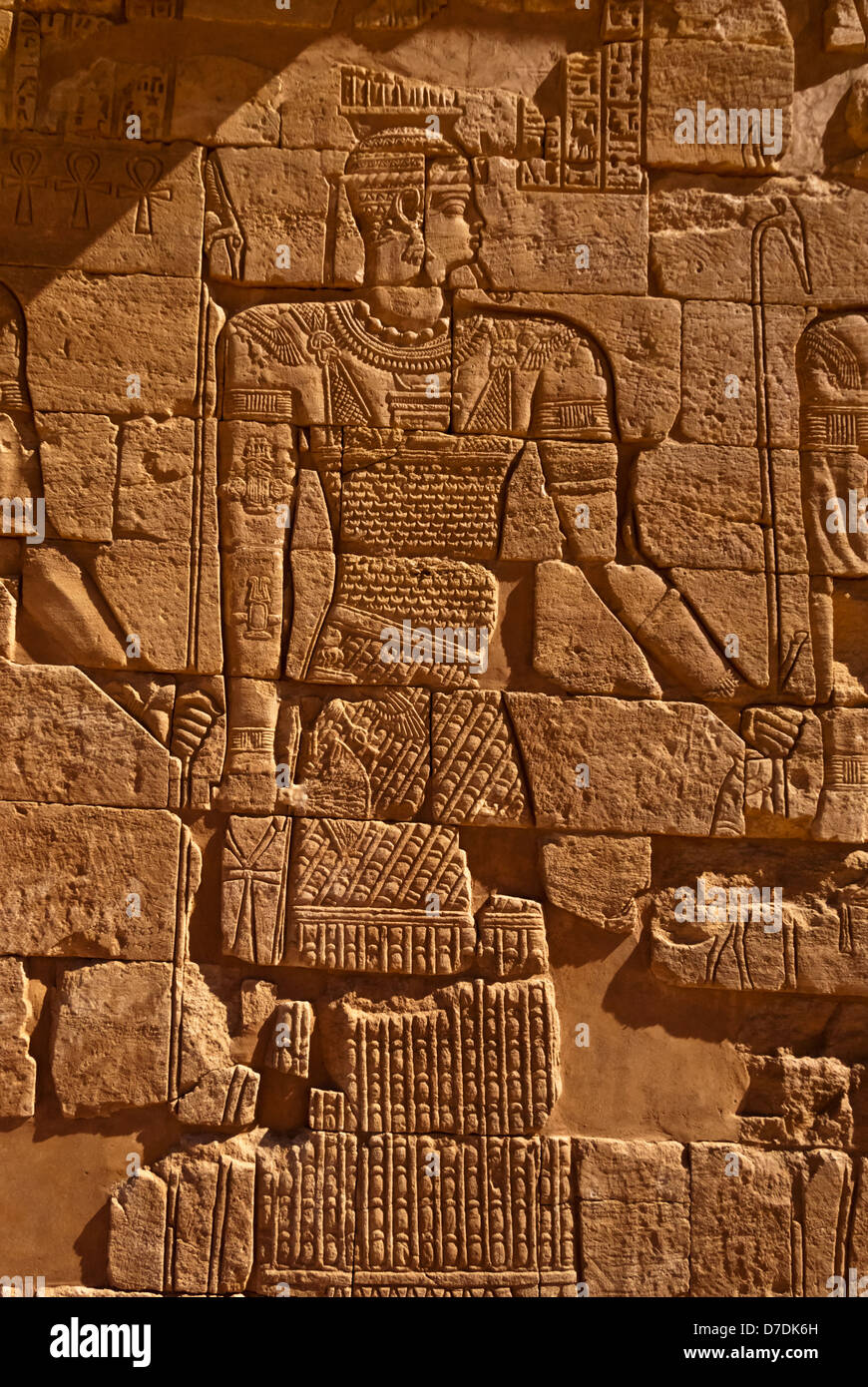Arensnuphis
Arensnuphis (also Arsnuphis or Harensnuphis ) was a Nubian deity of Ptolemaic-Roman period.
Name Meaning
The word " Arensnuphis " is the Greek form of the ancient Egyptian " Iri - hemes - nefer ", meaning " the good fellow ." This was especially an epithet of the god Shu in unternubischen temples of Ptolemaic-Roman period [A 1] and of Horus and served as a distinction from the Egyptian Nubian training or Horus. He was thus among other things, a husband and brother of Tefnut, and they moved according to a legend from Nubia to Egypt. [A 2]
Occurrence
It usually occurs as people multiform God, who is, for example on a crocodile with constricted mouth. He is also seen with Atef crown, a what - scepter and ankh - sign. Rare, however, is its manifestation as a border lion on a pylon. In Philae he possessed in the Ptolemaic period in addition to a dromos " cheft -Hor " small temple "House of the tooth ," where he was seen as a form of Nubian deity Dedun. Tiberius adorned the temple of final.
In Philae Arensnuphis contributed, among other things, the epithet " beautiful hunter, lord of Punt " as well as human -faceted God with Tatenen crown " good fellow in Abaton ". In addition Arensnuphis is on Philae as Amun and in his incarnation of Horus is as " good fellow in Nubia ." "The great wind ", " comes as North Wind ," " comes from Nubia ", " who creates the sky " and " heritage of Re" In Philae are additionally testified further epithet
Further south Arensnuphis often appears together with the God Sebiumeker as a guardian deity Meroitic temples, where Sebiumeker occurs as the patron of left and Arensnuphis as the protector of the right temple half. For example, in Musawwarat, in front of the temple of Isis in Naqa and Meroe. In Musawwarat he wears a crown with four spring close-fitting cap and a long robe decorated; in the hands there are several ankh - sign, what a scepter, a plant ostrich and a gazelle. Angelika Lohwasser sees this iconography great similarities with that of the ancient Egyptian hunting Onuris God of This. Inge Hoffmann refers in this connection to the corresponding inscription, in the Arensnuphis as "the good fellow, gentleman from Abaton ... at the top of Bigeh " is called and therefore as "god of the twelve miles of land " in close to the border area of Philae to is situate.
Origin
The origin of God is very controversial. Due to its similarity with Onuris he could have come from Egypt. Possibly dates the earliest Egyptian mention of a Hem - netjer - priest of " Khnum and Arensnuphis " into the strings of time. In meroitischem heartland Arensnuphis already occurs before the Ptolemaic period. It could also be that there were two forms. An Egyptian in Nubia, which is occupied mainly in Elephantine, and an independently Meroe in Upper Nubia.
In later times Arensnuphis was ousted in Nubia by Osiris.










